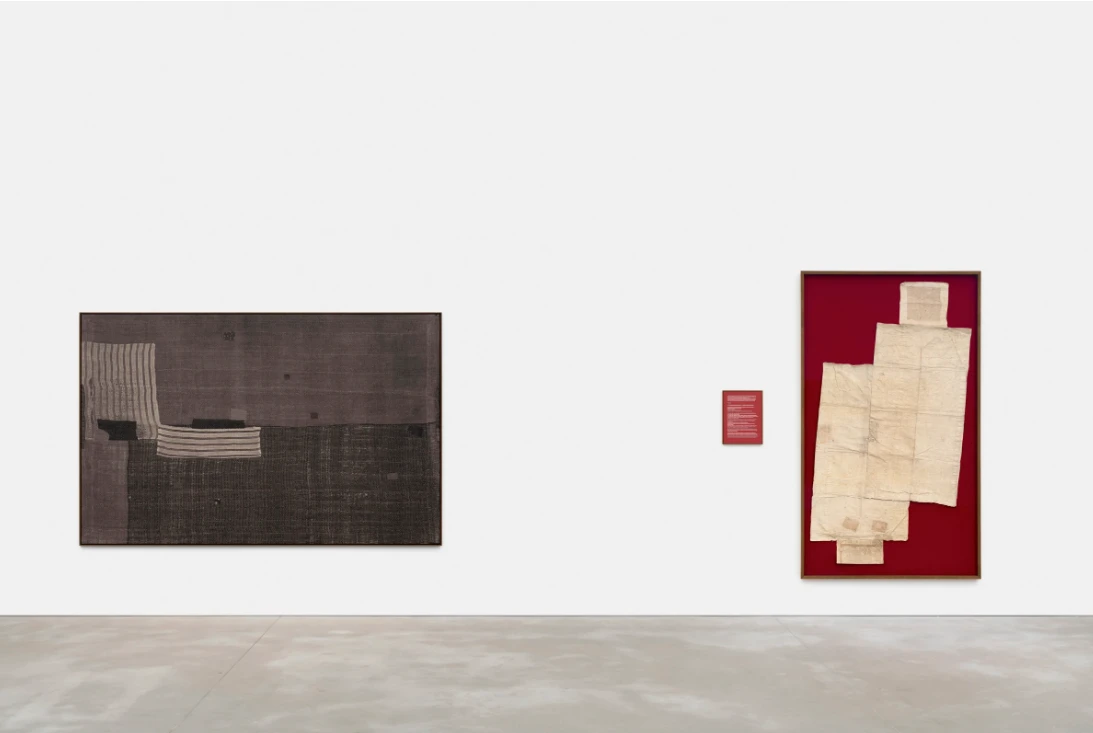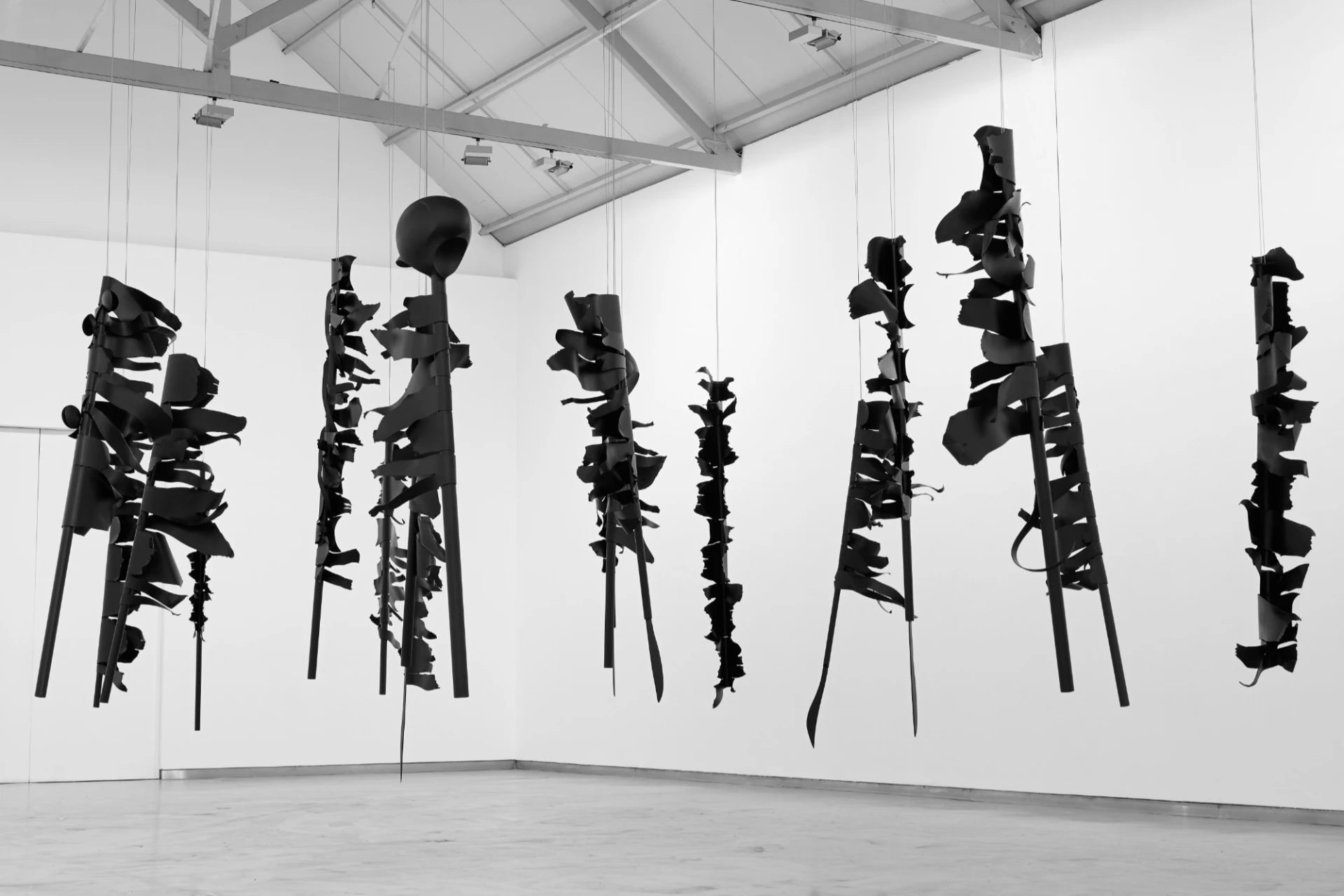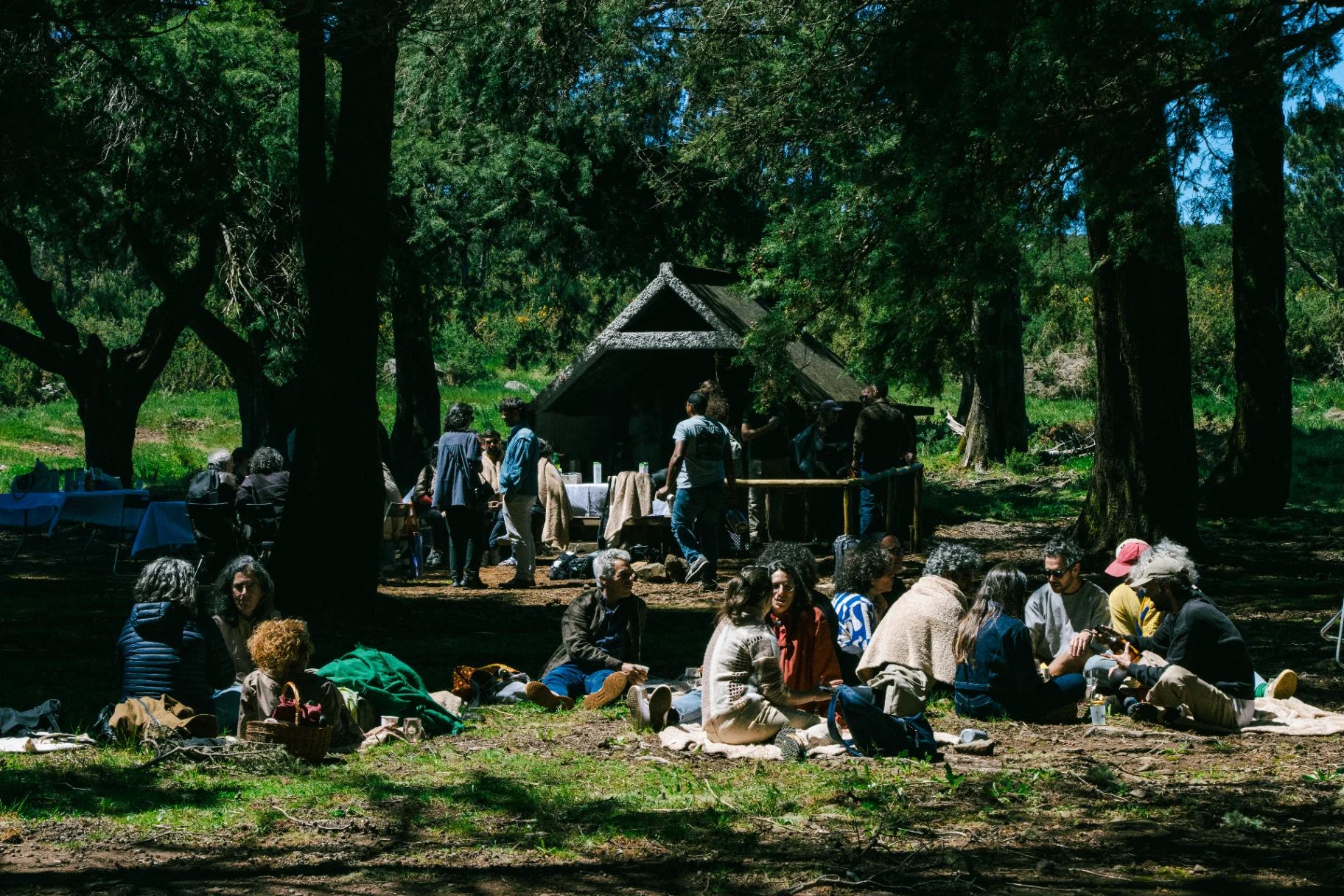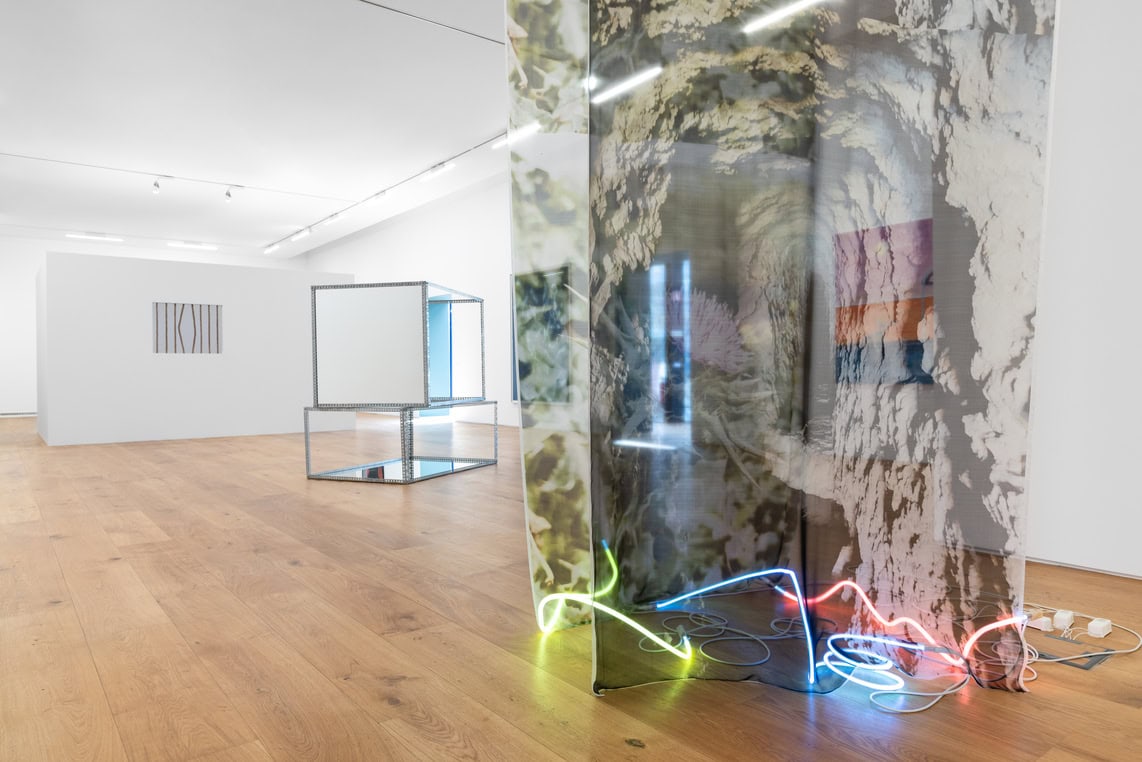article
Encontro Semeadores: a journey through Macaronesia
Connecting the archipelagos of the Azores, Madeira, the Canary Islands, and Cape Verde, highlighting their unique characteristics and peripheral status, seemed like a Herculean task. However, this was the fuel for the Encontro Semeadores, which took place from 19 to 24 May in Funchal, an event promoted by the Funchal City Council, with support from RPAC. To learn about the process, or simply for the pretext of sowing, Umbigo flew to Madeira.
Francisco Franco imprinted the gesture of sowing on bronze.
O Semeador[1] is a seminal figure, 2.45 meters tall, in the sculptor's career. There's a dramatic first breath in the figure's features: it recalls Rodin, or Van Gogh's summer fields, and it expresses a restrained humanity. Contained in its gesture, the body advances with silent gravity: one leg striding firmly, one hand holding the bag of dormant seeds, the other tossing them to the wind.
The sculpture was cast in Paris and presented at the 1924 National Salon, then traveled to Madeira Island in 1936. Since then, it has sought the most fertile ground: first in Plaza de Tenerife (whose name would later serve as a prelude), then on to Parque de Santa Catarina, and then to the Regional Government building. It can now be found attached to Paços do Concelho, the starting point for our journey throughout Macaronesia.
Connecting the archipelagos of the Azores, Madeira, the Canary Islands, and Cape Verde, highlighting their unique characteristics and peripheral status, seemed like a Herculean task. However, this was the fuel for the Encontro Semeadores, which took place from 19 to 24 May in Funchal, an event promoted by the Funchal City Council, with support from RPAC. To learn about the process, or simply for the pretext of sowing, Umbigo flew to Madeira. These are our highlights from three long days of discussions, workshops, exploration of the territory, but above all, encounters and inter-Atlantic similarities.
DAY ONE: THE CITY
The morning began early at the Baltazar Dias Theater, with a discussion session focused on the role of museums and institutions, featuring Ana Salgueiro (Funchal Modernist and Experimental), Ana Nolasco (author of the study Creative Archipelagos), João Paulo Constância (Carlos Machado Museum, Azores), Nestor Morales (TEA Tenerife, Canary Islands), and Sofia Botelho (Archipélago, Contemporary Arts Center, Azores). After lunch, the meeting point was O Semeador, and from there we set off for a tropical stroll through Funchal – trying not to lose sight of the birds of paradise that Luís Filipe Fernandes waved like a dome in the afternoon sun. From the view from the top of the City Hall Tower, to the old town neighborhood, we stopped at Largo do Corpo Santo. Two municipal initiatives, the Impulso Galeria de Arte Impulso and Estúdio de Criação Artística, flank the church and seek to counter the monoculture of tourism by anchoring young projects in the historic neighborhood's dynamic landscape. Francisca Mata, an artist in residence at Impulso these days, spoke to us about the platform's importance as a space for experimentation for emerging artists in Funchal (at a time when space and opportunities to create are scarce). Afterwards, we drank water from the spring, recommended by master Martinho Correia—the best and purest water you'll ever drink—to the sound of fishermen's stories, fish traps, and diving boys, who scooped up coins thrown into the sea by tourists with their feet, much to their delight.
After a refreshing break, we continued on to the opening of Isabel Madureira Andrade's exhibition at Capela Boa Viagem, a project artistically directed by Hélder Folgado with one arm at the Henrique and Francisco Franco Museum, where we would have to end the day. The evening was spent to the rhythmic (slow) sounds of Andrade's "Canções" (Songs), complete with a late-afternoon drink of Madeira wine. We discussed the meaning of line, the simplicity and rigor of stroke, the matrix and difficulty of methods, the research and the attempts. And, once again, the process of being in residency focused on a final product: an exhibition, a public display, the expectation and pressure that often arises in haste, and intended to be shortened to a seconds-long reel to post on any social network, where we'll swipe.
DAY TWO: THE ISLAND
Carolina Caldeira (Festival Fractal) opened the discussion session at the Baltazar Dias Theater. The programmer captivated us with her enthusiasm, sharing how she brings together a multidisciplinary festival combining architecture and visual arts in an ultraperipheral city. This is shared by Octávio Barreira and Ampi Aristu, the Lava Circular collective that makes El Hierro the cultural (and sensory) epicenter of the Canary Islands. From other peripheral areas, like Lisbon, João Rolaça shared a familiar project, the Oficinas do Convento in Montemor-o-Novo, and artist Paulo Brighenti shared the story of the RAMA residences, located on the outskirts of Torres Vedras. In the afternoon, on an excursion, we climbed from terrace to terrace up the mountain to visit the new Galeria Lourdes, at the foot of Quinta de São João. Lourdes (a name that could only be Madeiran) is a tribute to the collector's mother, says Aurélio Tavares, and houses a collection of over 250 pieces (which he began collecting when he was young, influenced by gallery owner and art collector Mário Teixeira da Silva, founder of the Módulo gallery - Centro Difusor de Arte). Shortly before, during lunch served in the shade of the porch, Aurélio Tavares had confided to us, smiling and resigned, that among the paintings lining the walls of the ground floor (right next door), that is, among Lourdes de Castro, Cruzeiro Seixas, Nadir Afonso, and Paula Rego, there was a fake oil painting by Amadeo de Souza Cardoso. During the break, between coffee and dessert, we couldn't resist checking out the painting...
We then continued through tunnels to the Casa das Mu.das – Madeira Museum of Contemporary Art, designed by architect Paulo David, where a guided tour awaited us down the mountain, and a sprig of rosemary at the exit. We remembered the simplicity of Lourdes Castro in her garden, and with that image we returned to Funchal, where we scattered with Rita Silva (Anda & Fala), Catarina Claro (Trégua project), and the girls and boys of Dançando com a Diferença, leaving prejudice and shame aside.
DAY THREE: THE ARCHIPELAGOES
On the last day, the morning began differently. Breakfast was served at Porta 33, a must-visit place when in Funchal. Porta 33 is one of those portals where art and life form the structure of the same seed, the same plant, the same herbarium, which has germinated in the center of Funchal and represents Portuguese contemporary art over the last three decades. It is an active space, a winter garden, an archive, and now also a modern school in Porto Santo.
We then proceeded to the Baltazar Dias Theater, where Martinho Mendes once again mediated a conversation between archipelagos, showcasing island cultural practices: Artur Marçal (National Center for Art, Crafts, and Design, Cape Verde), Adonay Bermúdez (Lanzarote Biennial, Canary Islands), and Jesse James (Walk&Talk Festival, Azores, now biennial). The day and the program concluded with the performance "Landscape in Line" by Gustavo Ciríaco, a gesture between the two-dimensional drawing of the topography and the three-dimensionality of the mountains and valleys, reminding us that landscape is a human construction.
Having sown the seeds of the journey, we are left to wait for the harvest, singing the song of the sower of Torga: “(…) But every sower / Sows against the present / Sows like a seer / The harvest of the future, / Without knowing if the ground is hard / And receives the seed”. [3]
[1] As with several other early works, prior to his most significant production during the Estado Novo period, some of these pieces are on display at the National Museum of Contemporary Art in Chiado.
[2]A project by Funchal City Council with support from the Portuguese Contemporary Art Network, artistic direction by Hélder Folgado and Martinho Mendes, coordination by Sara Canavezes and cultural mediation by Filipe Fernandes.
[3] Free translation.
BIOGRAPHY
Architect (FA-UL, 2014) and independent curator (postgraduate at FCSH-UNL, 2021). In 2018, he founded the curatorial collective Sul e Sueste, a joint platform between art and architecture, territory and landscape. As a curator, he has regularly collaborated with a number of institutions, municipalities and independent spaces, including ‘Space, Time, Matter’ (group exhibition at the Madre Deus Convent in Verderena, Barreiro, 2020), ‘How to find the centre of a circle’ with artist Emma Hornsby (INSTITUTO, 2019) and ‘Fleeting Carpets and Other Symbiotic Objects’ with artist Tiago Rocha Costa (A.M.A.C., 2020). He was recently co-curator with architect Ana Paisano of the exhibition ‘Cartografia do horizonte: do Território aos Lugares’ for the Museu da Cidade in Almada (2023). He regularly writes reviews and essays for magazines, publications, books and exhibitions. He is co-author of the book ‘Gaio-Rosário: leitura do lugar’ (CM Moita, 2020), ‘À soleira do infinito. Cacela velha: arquitectura, paisagem, significado’ (author's edition with the support of the Direção Regional da Cultural do Algarve, 2023) and “Geografias Urbanas” (under publication). His professional activity revolves around the various branches of architecture.
ADVERTISING
Previous
agenda
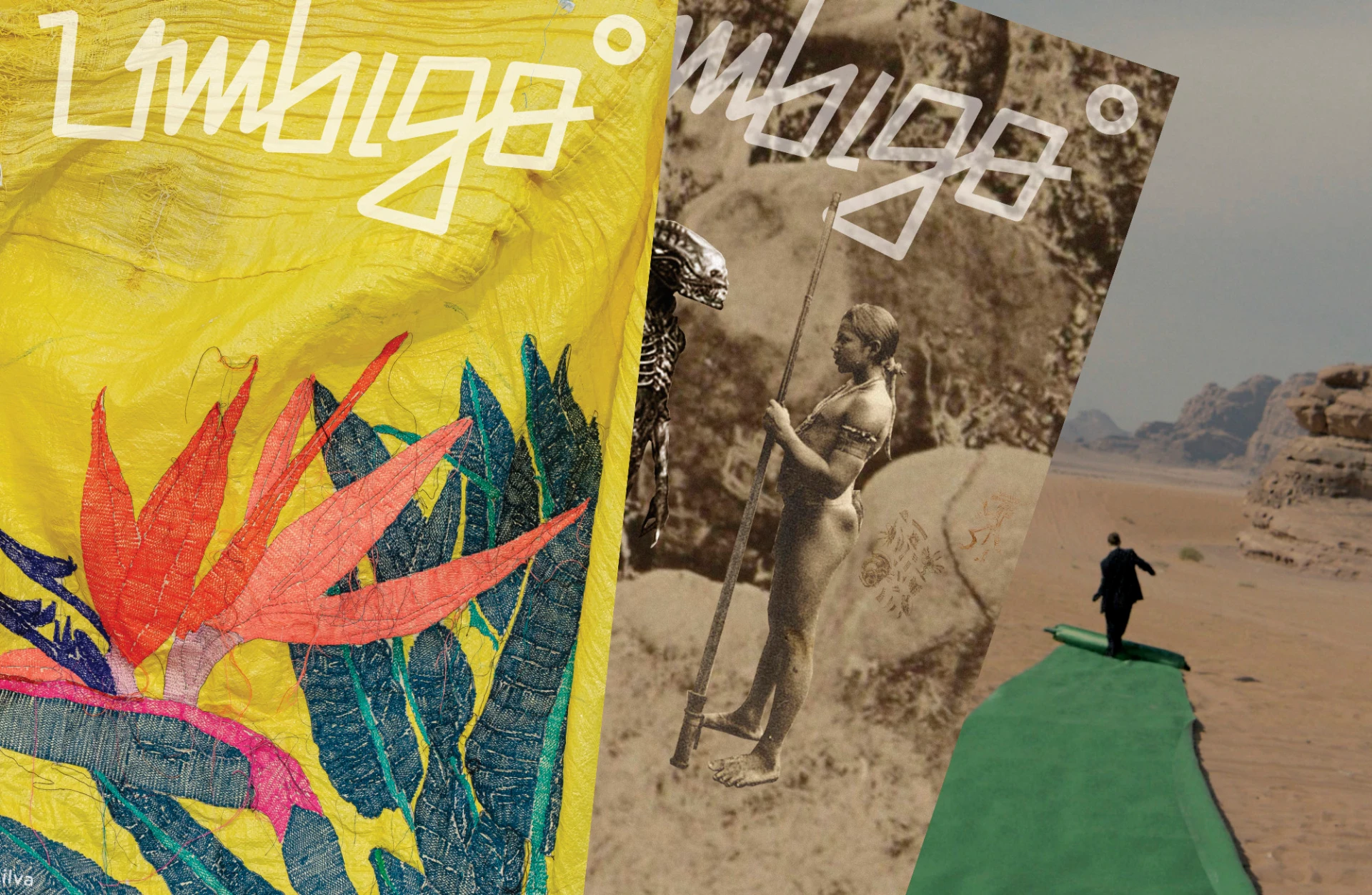
16 Jul 2025
Umbigo #93 - Regeneration
By Umbigo
Next
agenda
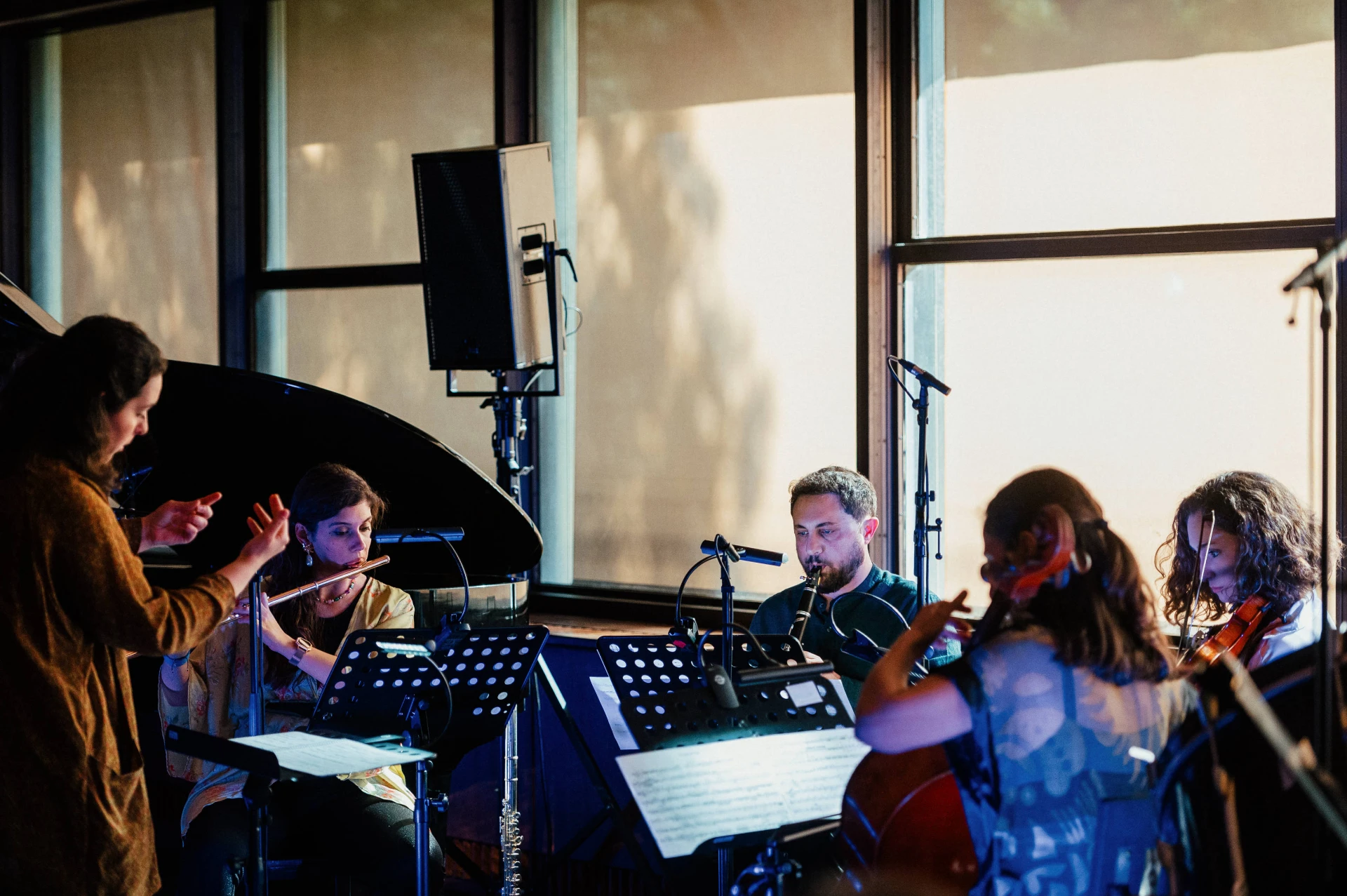
17 Jul 2025
Ensemble DME, at the Postgraduate Week in Applied Music Composition
By Umbigo
Related Posts
